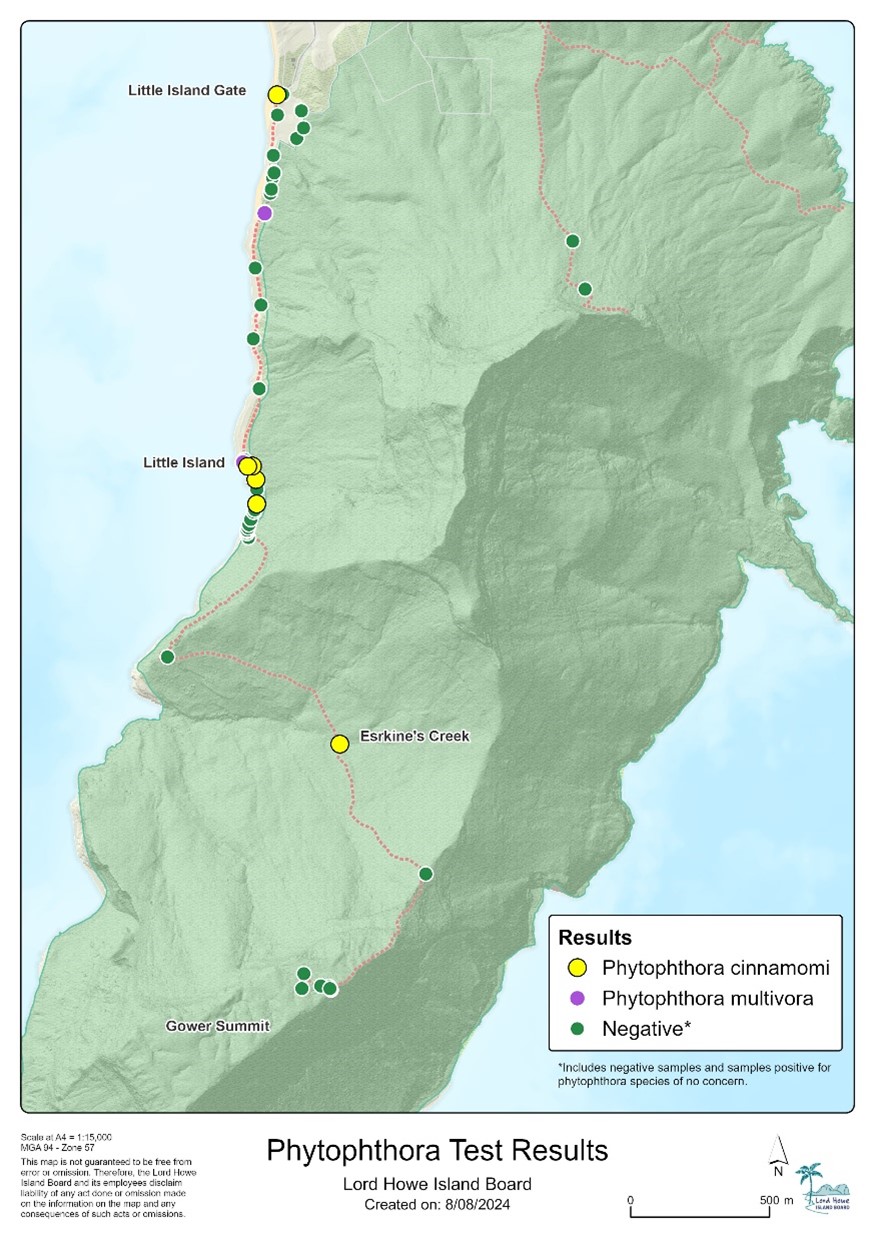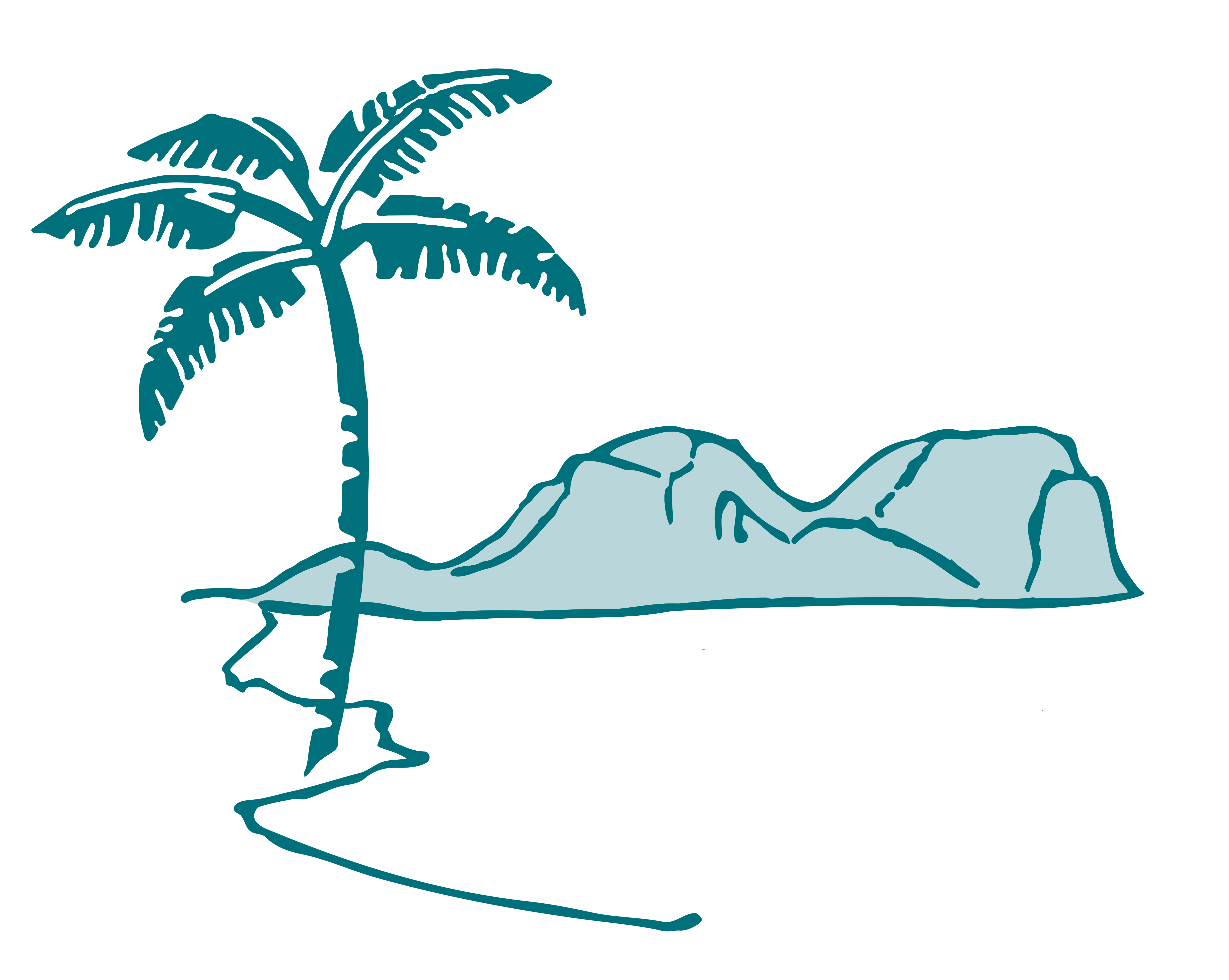Phytophthora cinnamomi detection at Erskines Creek
Results from surveys conducted in April detected several Phytophthora species in the settlement area and at three locations in the Permanent Park Preserve. Some of these species are considered a risk to biodiversity, with Phytophthora cinnamomi being of most concern.
Since receiving these results, the LHIB undertook additional sampling in June. The aim of this sampling was to determine the extent of spread beyond the last known positive detection at Little Island.
Nine samples were taken along the Mt Gower track in areas likely to harbour the pathogen, such as popular rest stops or locations with symptomatic vegetation, as well as several samples from the summit of Mt Gower.
These samples were sent to Royal Botanic Gardens PlantClinic

Phytophthora sampling results – Southern Mountains
What is Phytophthora?
Phytophthora is a genus of water moulds that can cause devastating impacts to native ecosystems and agricultural crops, resulting in disease, death and possible extinction of susceptible species. Of the Phytophthora species that have been detected on the island, the following pose the greatest risk to biodiversity and agriculture:
Phytophthora cinnamomi, a devastating plant pathogen that is listed as a Key Threatening Process under the NSW Biodiversity Conservation Act (2016). It was first detected on the Island in 2003 and has since spread to the following locations:
- Settlement (LHIB Depot and Soldiers Creek Area/lands south of Golf Club)
- Start of Smoking Tree Ridge Track
- Little Island Track & Little Island
- Mt Gower Track
- Erskines Creek
Phytophthora multivora, a pathogen associated with disease of woody plants and declining trees. It was first discovered on the Island in 2015 and has since been detected at:
- North Bay
- Settlement North (Stevens Reserve, Bowker Ave, Clear Place Track)
- Settlement South (Blinky Beach, Soldiers Creek Area/lands south of Golf Club)
- Start of Smoking Tree Ridge Track
- Little Island Track & Little Island
Phytophthora nicotiane, a pathogen that causes disease in more than 255 species of plants, including agricultural crops. It was first detected on the Island in April 2024 at the following locations:
- Settlement (near Stevens Reserve)
- Mt Gower Track
How you can help
There are currently no known methods to eradicate Phytophthora, so preventing further spread is the key strategy to reduce impact. Please ensure that you continue to carry out hygiene protocols, including using all boot scrub stations whenever they are encountered, and staying on marked trails.
To protect the unique ecosystems in the Southern Mountains, LHIB ask that you do not access the Mt Gower track unless accompanied by a licenced guide, or for management reasons, to ensure additional hygiene practices can be implemented.
LHIB are working to install additional sanitising stations beyond the limit of detection.
Next steps for management
PlantClinic staff will return to the Island in mid-September to undertake the next round of delimiting surveys. The sampling strategy for these surveys is currently being designed and will focus on determining the extent of spread beyond the current limit of detection.
The LHIB are currently implementing recommendations from a report prepared by PlantClinic staff. Results from surveys planned in September will further inform future management actions to limit the spread of this pathogen.
PlantClinic staff will provide a public information session whilst they are on Island to explain the threats associated with Phytophthora and strategies to minimise its spread. Further details will be confirmed in a householder.
For any questions or concerns, please contact Cristina Venables, Team Leader World Heritage (Cristina.Venables@lhib.nsw.gov.au), Nicola Fuller, Team Leader Flora and Weeds (Nicola.fuller@lhib.nsw.gov.au), or Darryl Birch, Team Leader Biosecurity (Darryl.Birch@lhib.nsw.gov.au).
